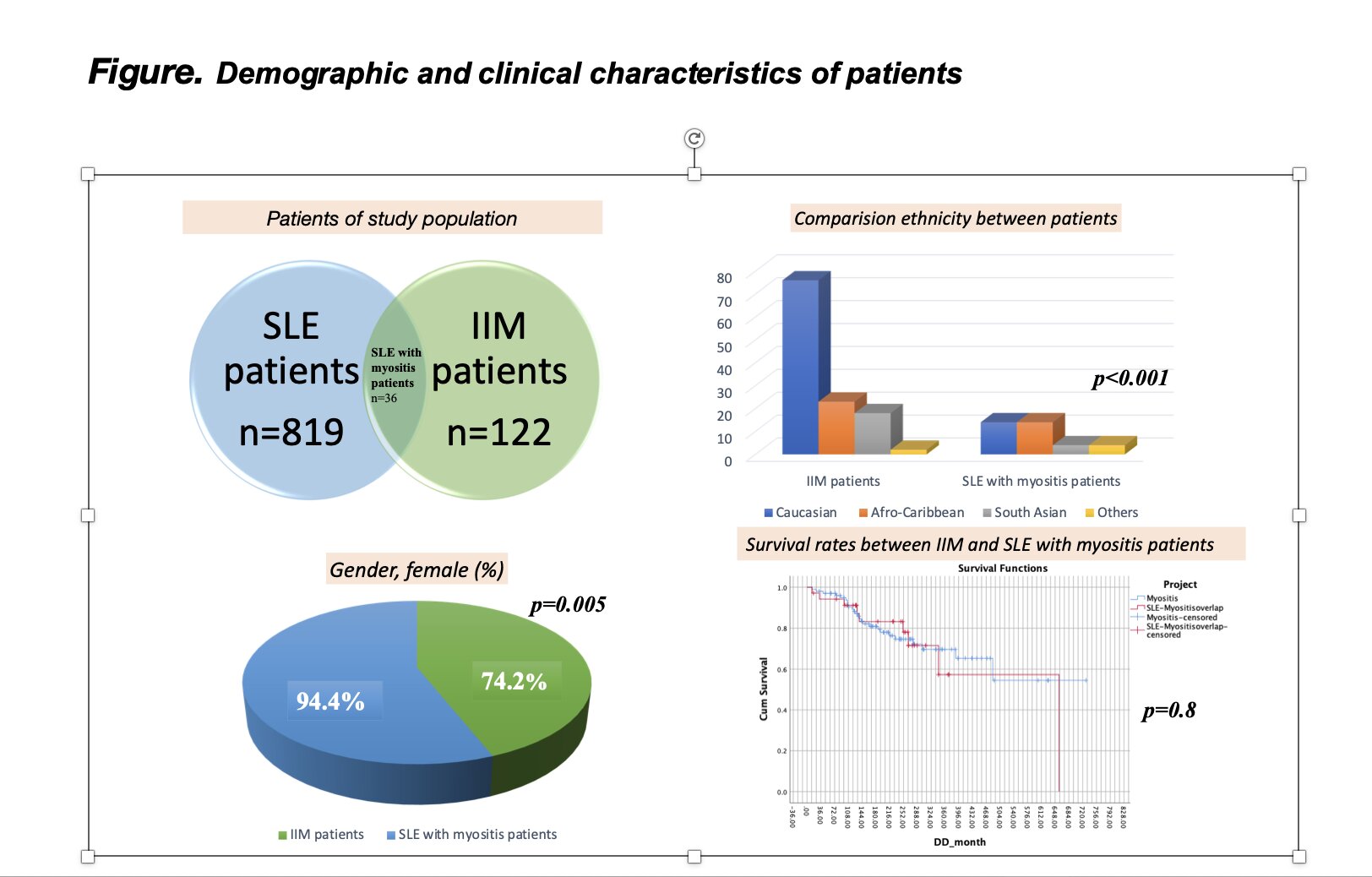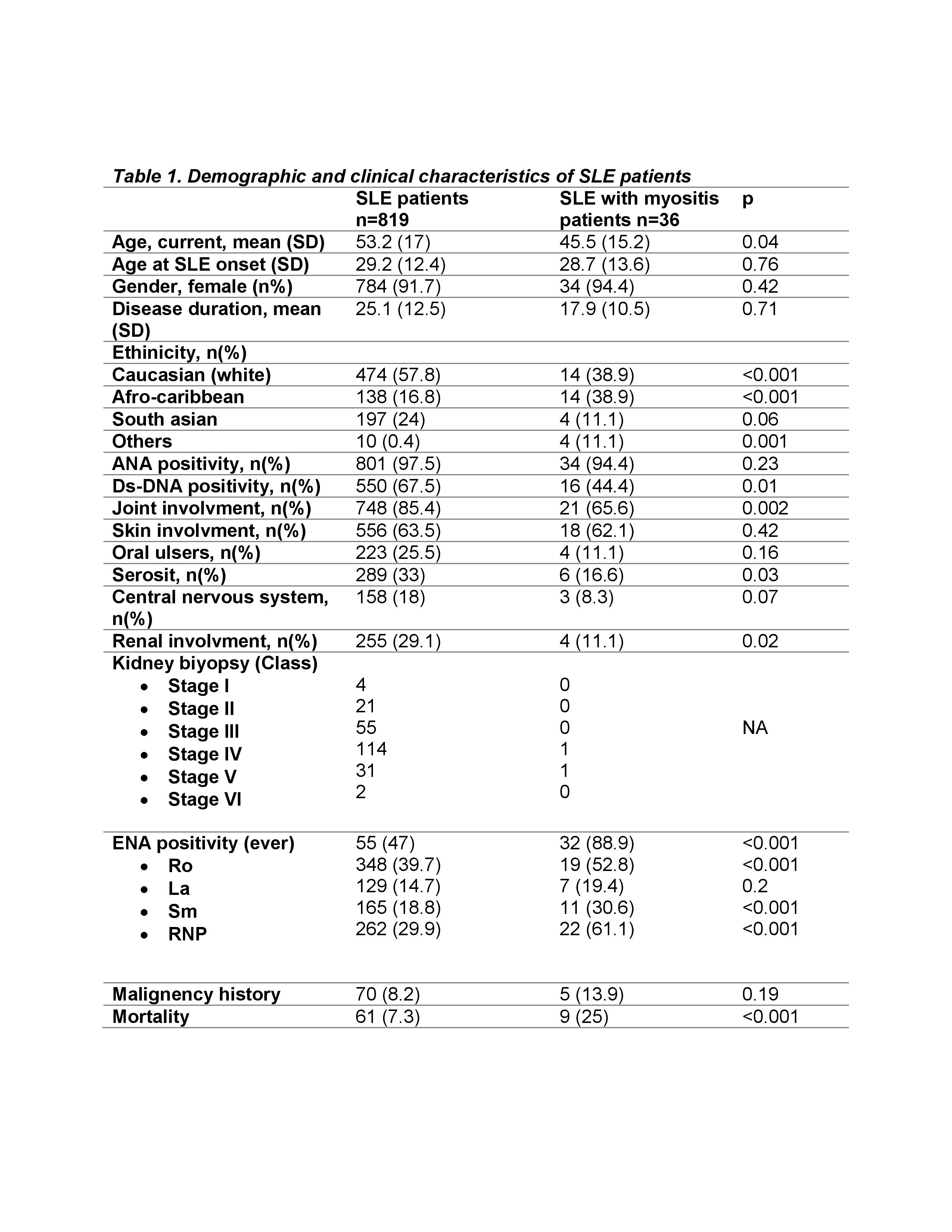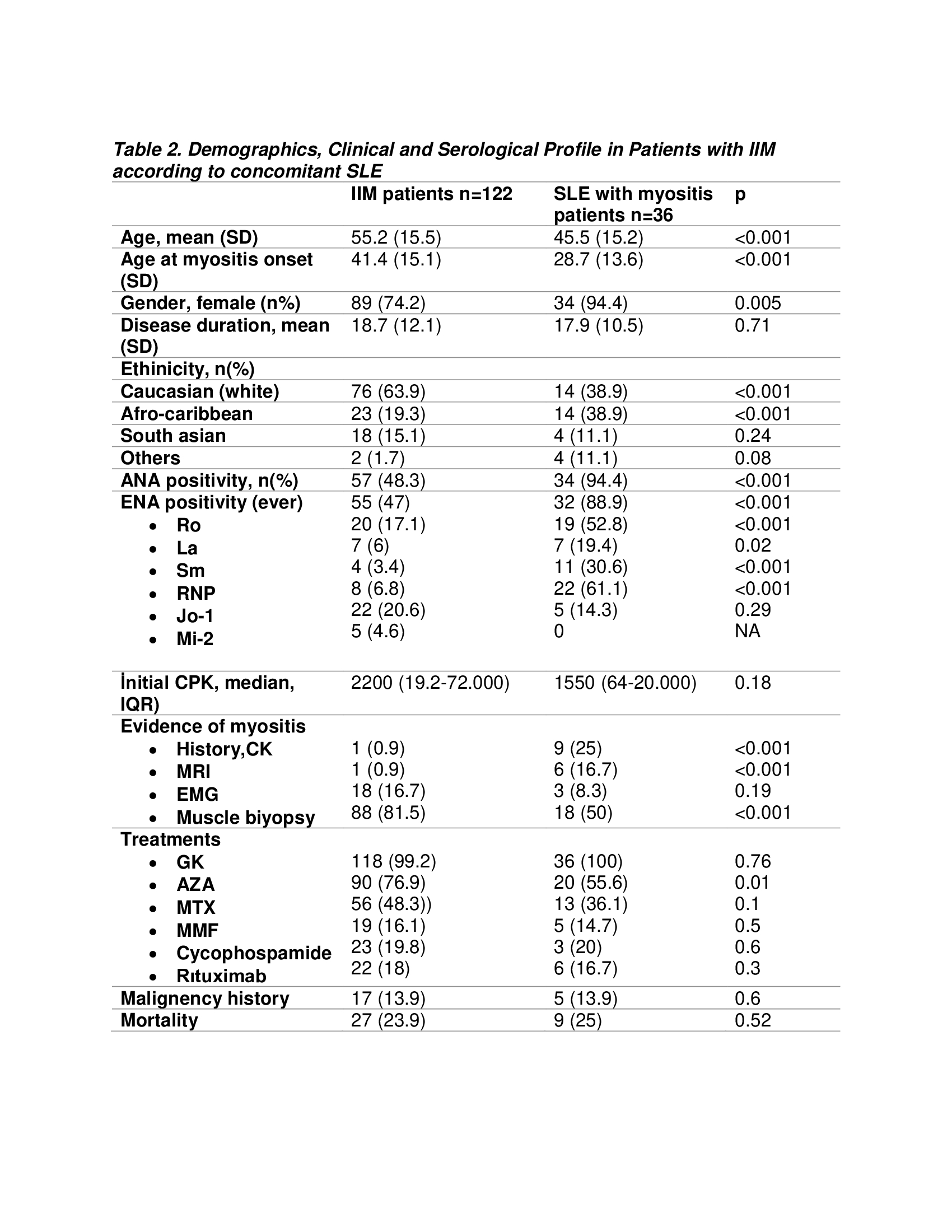Session Information
Session Type: Poster Session C
Session Time: 10:30AM-12:30PM
Background/Purpose: Systemic lupus erythematosus (SLE) and idiopathic inflammatory myositis (IIM) are chronic, potentially severe autoimmune diseases, that may affect many organs/ systems. In this study, we aimed to determine whether patients with SLE whose disease is complicated by myositis, have a worse outcome compared to those who do not. From a cohort of 855 SLE patients followed for up to 45 years (using 158 IIM patients as a control), we compared the groups for clinical and serological features and outcomes (including malignancy, mortality and renal failure).
Methods: This was a retrospective observational study from January 1978 to June 2024, including SLE and IIM patients followed in the Autoimmune Rheumatid Disease Clinic at a tertiary hospital. Clinical records (paper and electronic) were reviewed to obtain information about the patients’ demographics and outcomes. Data were analyzed using IBM SPSS Statistics for Windows, Version 26.0. (IBM Corp., Armonk, NY, USA). The variables were investigated using visual (histogram and probability plots) and analytical methods (Kolmogorov–Smirnov, skewness, and kurtosis) to test the normality of the data. Categorical variables were presented as absolute frequencies and percentages and were compared using the Chi-square test or Fisher’s exact test, when appropriate. The student’s t-test and the Mann–Whitney U-test were used to compare normally- and non-normally distributed continuous variables, respectively, between two groups. The survival anaysis was assessed by means of Kaplan–Meier curves and log-rank test.
Results: 855 SLE patients, 36 (4.2%) were diagnosed with myositis. Among 158 myositis patients, 36 (22.7%) had a concomitant SLE diagnosis. Those patients with SLE ‘alone’ had a worse renal outcome compared to those SLE + myositis (29.1% vs 11.1% p=0.02). Conversly, mortality rate was higher in SLE + myositis than SLE patients ‘alone’ (7.3% vs 25% p< 0.001) (Table 1).The age at diagnosis of IIM patients was higher than the SLE+myositis patients 41.4(±15.1) vs 28.7 (±13.6) p< 0.001). Most IIM patients were female (n=89; 74.2%) but this was lower than the SLE+ myositis patients. Most IIM patients were caucasian (n=76; 63.9%), a higher rate than SLE +myositis patients (See figure). While ENA-specific autoantibodies were more common in SLE+myositis, unsuprisingly Jo-1 positivity was more common in IIM patients (Table 2). Malignancy history was the same in both groups. In Kaplan Meier survival analysis, there was no difference between the groups (log rank=0.8) (See figure).
Conclusion: Our study has demonstrated that SLE ‘alone’ patients have poor renal outcomes, but have lower mortality rates than SLE+myositis patients. In addition, mortality may be increased and malignancy more freuent in SLE patients when accompanied by myositis.
To cite this abstract in AMA style:
Sandal Uzun G, Isenberg D. Clinical Characteristics and Outcomes of Systemic Lupus Erythematosus When Accompanying Myositis: A Retrospective Real-Life Study [abstract]. Arthritis Rheumatol. 2024; 76 (suppl 9). https://acrabstracts.org/abstract/clinical-characteristics-and-outcomes-of-systemic-lupus-erythematosus-when-accompanying-myositis-a-retrospective-real-life-study/. Accessed .« Back to ACR Convergence 2024
ACR Meeting Abstracts - https://acrabstracts.org/abstract/clinical-characteristics-and-outcomes-of-systemic-lupus-erythematosus-when-accompanying-myositis-a-retrospective-real-life-study/



